Chhetri on:
[Wikipedia]
[Google]
[Amazon]
Chhetri (Kshetri, Kshettri, Kshetry or Chhettri), ( ;
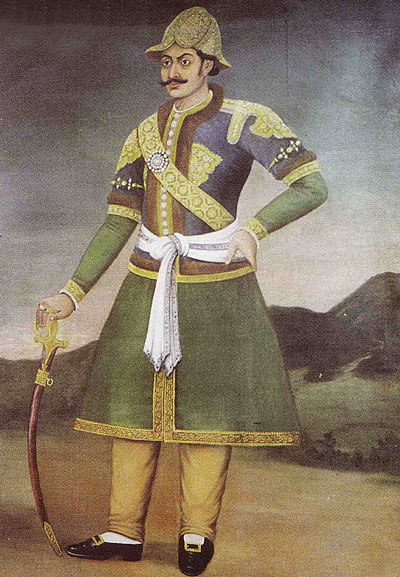 The caste system of Nepal was decided according to the occupation they did from the ancestors of their family, known as
The caste system of Nepal was decided according to the occupation they did from the ancestors of their family, known as
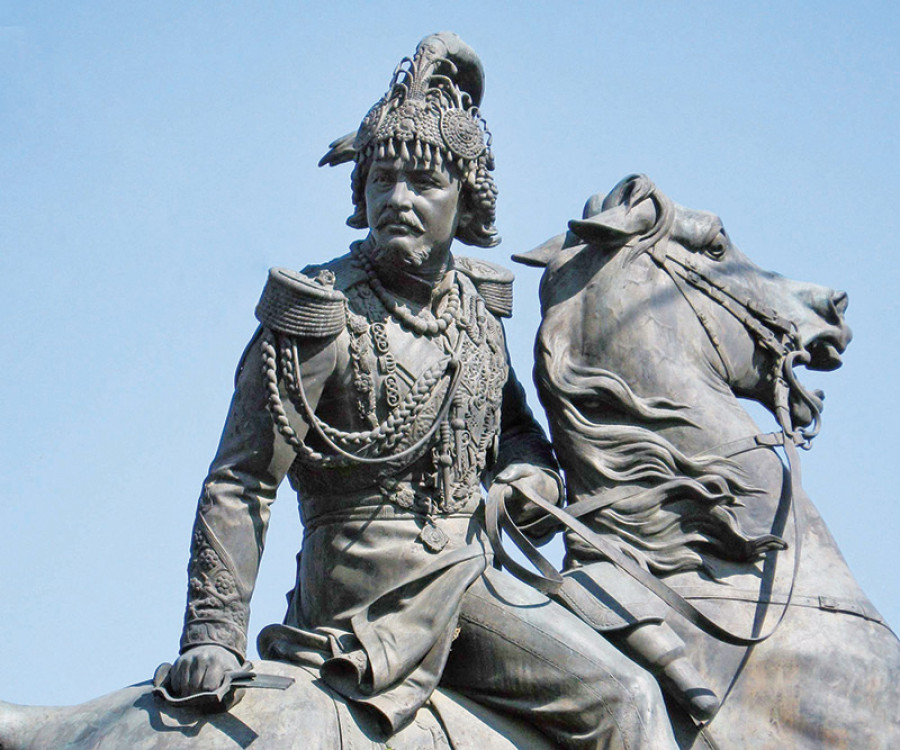
 They are thought to be connected to the Khasas mentioned in the ancient Indian literature and the medieval Khasa kingdom. In the early modern history of Nepal, Chhetris played a key role in the Unification of Nepal, providing the core of the Gorkhali army of the mid-18th century. Bir Bhadra Thapa was a Thapa of Chhetri group and leading Bharadar during Unification of Nepal. His grandson
They are thought to be connected to the Khasas mentioned in the ancient Indian literature and the medieval Khasa kingdom. In the early modern history of Nepal, Chhetris played a key role in the Unification of Nepal, providing the core of the Gorkhali army of the mid-18th century. Bir Bhadra Thapa was a Thapa of Chhetri group and leading Bharadar during Unification of Nepal. His grandson
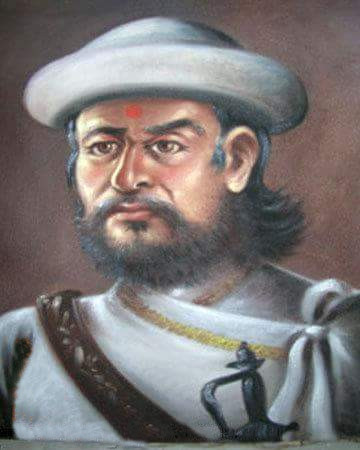 The most prominent feature of Nepalese Chhetri society has been the Rana Prime Ministers (1846–1953), the
The most prominent feature of Nepalese Chhetri society has been the Rana Prime Ministers (1846–1953), the

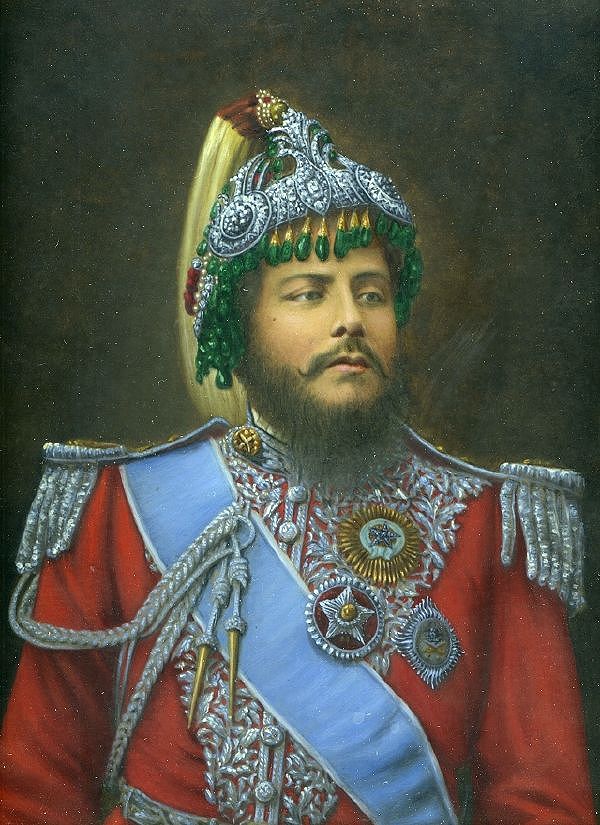 Chhetri had dominated high military positions and monopolized the military force at the times of Chhetri autocratic administrators like PM
Chhetri had dominated high military positions and monopolized the military force at the times of Chhetri autocratic administrators like PM 
 Anglo-Nepalese War and Nepal-Tibet War
Chhetri commanders and generals of the military campaigns of the kingdom of Nepal have shaped the political course of the country overwhelmingly.
Anglo-Nepalese War and Nepal-Tibet War
Chhetri commanders and generals of the military campaigns of the kingdom of Nepal have shaped the political course of the country overwhelmingly.
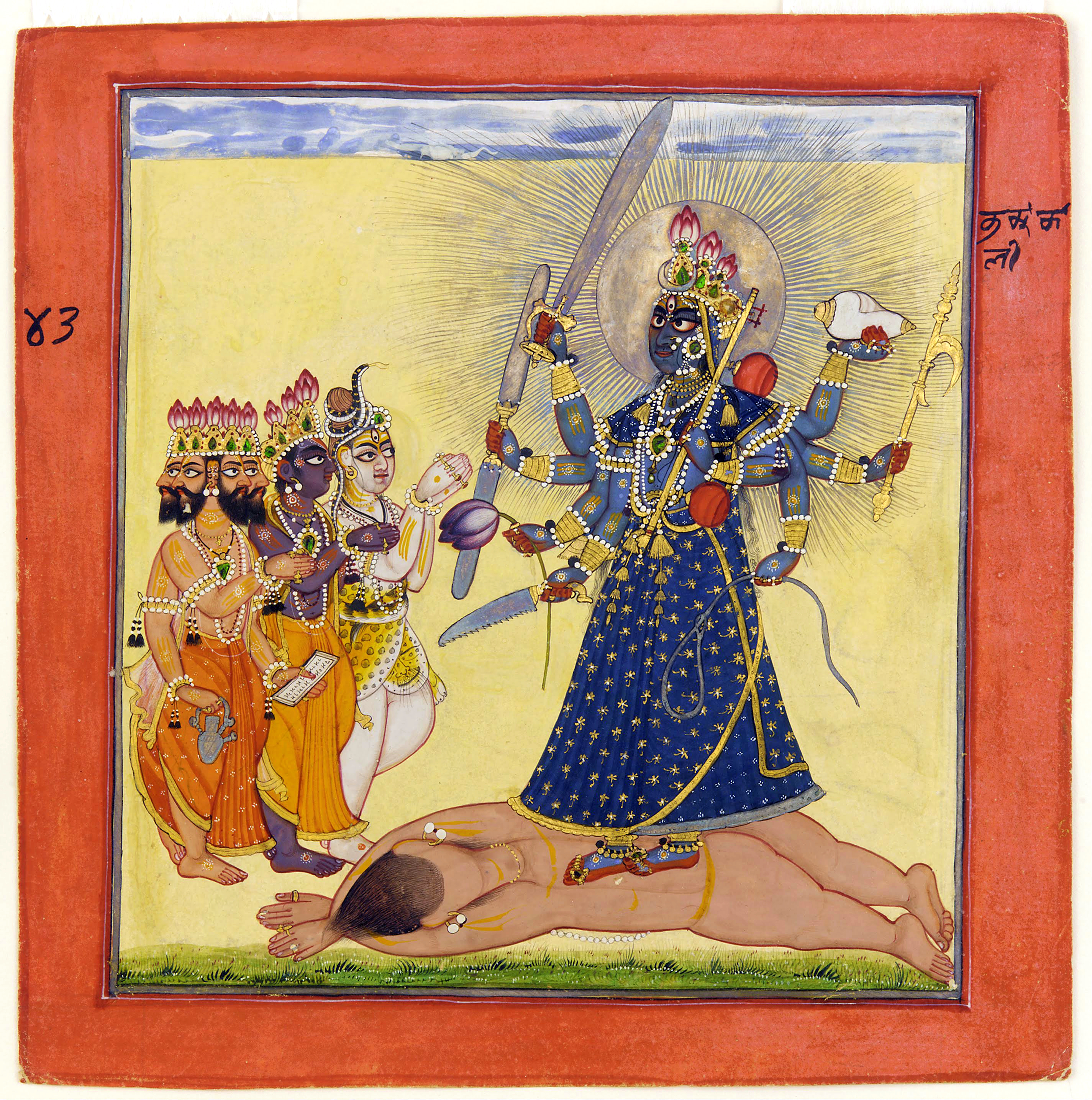 Almost all the Chhetris are
Almost all the Chhetris are
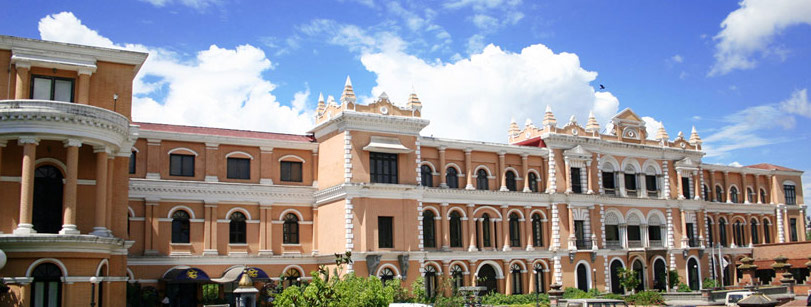 Surnames of Chhetris include, among others:
* Adhikari/Raya, Thami, Khulal, Khapatari, & Thada
* Baniya
* Basnet
* Bisht
*
Surnames of Chhetris include, among others:
* Adhikari/Raya, Thami, Khulal, Khapatari, & Thada
* Baniya
* Basnet
* Bisht
*

 The Central Bureau of Statistics of Nepal classifies Chhetris as a subgroup within the broader social group of Khas Arya (together with
The Central Bureau of Statistics of Nepal classifies Chhetris as a subgroup within the broader social group of Khas Arya (together with
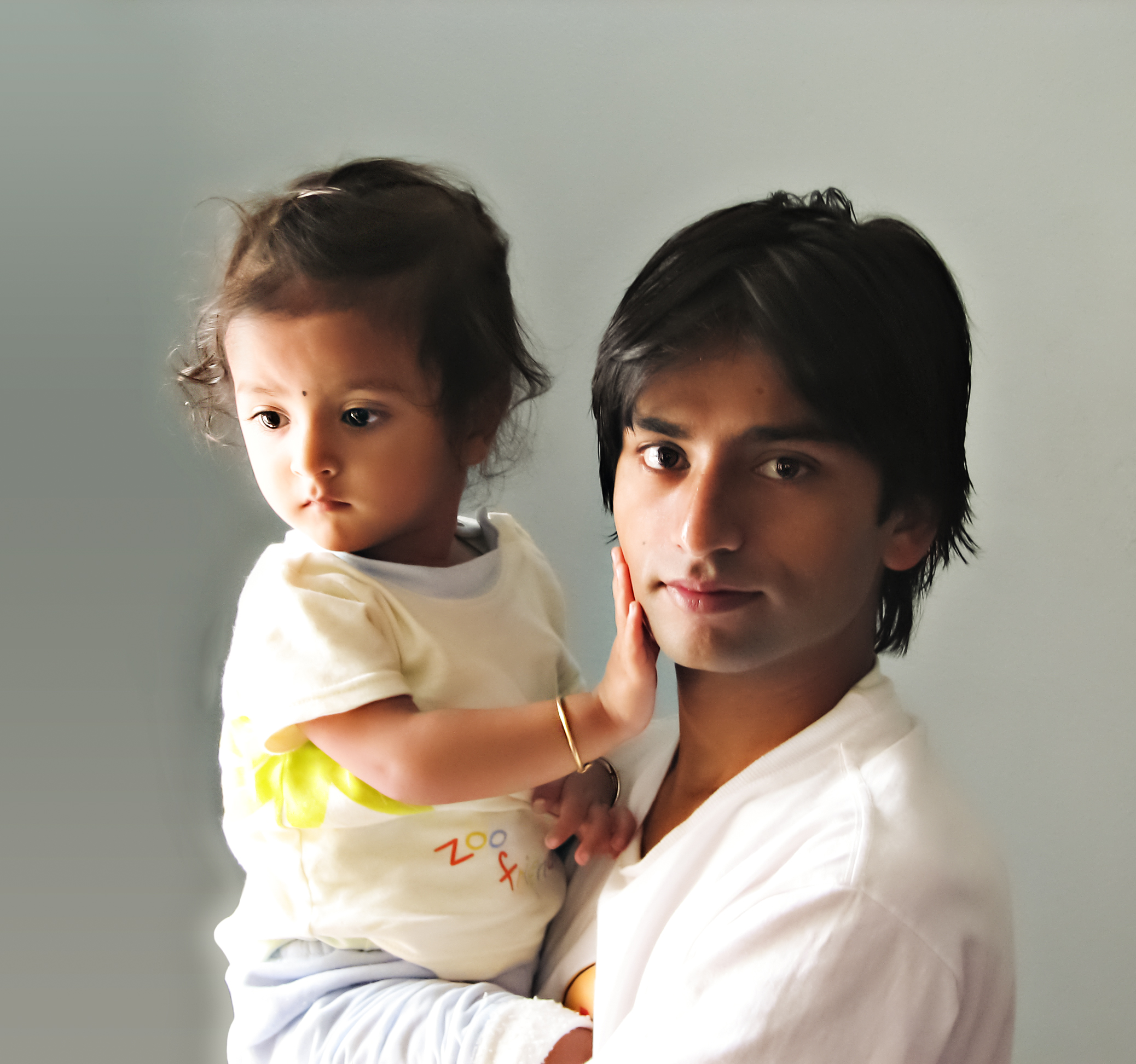 Chhetri together with
Chhetri together with
IAST
The International Alphabet of Sanskrit Transliteration (IAST) is a transliteration scheme that allows the lossless romanisation of Brahmic family, Indic scripts as employed by Sanskrit and related Indic languages. It is based on a scheme that ...
: ''Kṣetrī'') historically called Kshettriya or Kshetriya or Khas are Nepali speaking people historically associated with the warrior class and administration, some of whom trace their origin to migration from medieval India
Medieval India was a long period of post-classical history in the Indian subcontinent between the ancient and modern periods. It is usually regarded as running approximately from the break-up of the Gupta Empire in the 6th century to the star ...
. Chhetri was a caste
A caste is a Essentialism, fixed social group into which an individual is born within a particular system of social stratification: a caste system. Within such a system, individuals are expected to marry exclusively within the same caste (en ...
of administrators, governors, warriors
A warrior is a guardian specializing in combat or warfare, especially within the context of a tribal or clan-based warrior culture society that recognizes a separate warrior aristocracy, class, or caste.
History
Warriors seem to have been p ...
and military elites in the medieval Khas Kingdom and Gorkha Kingdom (later unified Kingdom of Nepal
The Kingdom of Nepal was a Hindu monarchy in South Asia, founded in 1768 through the unification of Nepal, expansion of the Gorkha Kingdom. The kingdom was also known as the Gorkha Empire and was sometimes called History of Asal Hindustan, ...
). The nobility of the Gorkha Kingdom mainly originated from Chhetri families. They also had a strong presence in civil administration affairs. The bulk of prime ministers of Nepal before the democratization of Nepal belonged to this caste as a result of the old Gorkhali aristocracy. Gorkha-based aristocratic Chhetri families included the Pande dynasty, the Basnyat dynasty, the Kunwar family (and their offspring branch, the autocratic Rana dynasty) and the Thapa dynasty. From 1806 to 1951, Chhetri prime ministers wielded absolute rule in the country and the monarchy was reduced to a powerless figurehead.
Khas Chhetris were traditionally considered a division of the Khas people with Khas Brahmin (commonly called Khas Bahun). They make up 16.45% of Nepal's population according to the 2021 Nepal census
The 2021 Nepal Census was the twelfth nationwide census of Nepal conducted by the Central Bureau of Statistics. The census was originally scheduled from 8 June to 22 June 2021, but was postponed to November 2021 due to a surge in COVID-19 case ...
, making them the most populous caste or ethnic community in Nepal. Chhetris speak an Indo-Aryan Nepali language
Nepali (; , ), or ''Gorkhali'' is an Indo-Aryan languages, Indo-Aryan language native to the Himalayas region of South Asia. It is the official and most widely spoken Languages of Nepal, language of Nepal, where it also serves as a ''lingua fr ...
('' Khas-Kura'') as mother tongue.
Etymology and background
Chhetri is considered a direct derivative of the Sanskrit word ''Kshatriya
Kshatriya () (from Sanskrit ''kṣatra'', "rule, authority"; also called Rajanya) is one of the four varnas (social orders) of Hindu society and is associated with the warrior aristocracy. The Sanskrit term ''kṣatriyaḥ'' is used in the con ...
'' from the root ''kṣatra'' meaning "rule or authority" which was associated with the ruling and warrior class of Hindu
Hindus (; ; also known as Sanātanīs) are people who religiously adhere to Hinduism, also known by its endonym Sanātana Dharma. Jeffery D. Long (2007), A Vision for Hinduism, IB Tauris, , pp. 35–37 Historically, the term has also be ...
society. According to the 1854 Legal Code (''Muluki Ain'') of Nepal, Chhetris were a social group among the sacred thread bearers (Tagadhari
''Tagadhari'' () are members of a Nepalis, Nepalese Hindu group that is perceived as historically having a high socio-religious status in society. Tagadhari are identified by a ''sacred thread'' (Janai) around the torso, which is used for ritual ...
) and '' twice-born people'' of the Hindu
Hindus (; ; also known as Sanātanīs) are people who religiously adhere to Hinduism, also known by its endonym Sanātana Dharma. Jeffery D. Long (2007), A Vision for Hinduism, IB Tauris, , pp. 35–37 Historically, the term has also be ...
tradition. Almost all Chhetris are Hindu.
The term 'Chhetri' was adopted by a lot of the high-ranking Khas
Khas peoples or Khas Tribes, (; ) popularly known as Khashiya are an Indo-Aryan ethno-linguistic group native to the Himalayan region of the Indian subcontinent, in what is now the South Asian country of Nepal, as well as the Indian stat ...
after the unification of Nepal, and it was formalized by an order of Bir Narsingh Kunwar(Jang Bahadur Rana), who considered their original name (Khasa) to be derogatory.
The family occupation of Chhetris
 The caste system of Nepal was decided according to the occupation they did from the ancestors of their family, known as
The caste system of Nepal was decided according to the occupation they did from the ancestors of their family, known as Dharma
Dharma (; , ) is a key concept in various Indian religions. The term ''dharma'' does not have a single, clear Untranslatability, translation and conveys a multifaceted idea. Etymologically, it comes from the Sanskrit ''dhr-'', meaning ''to hold ...
(Devanagari
Devanagari ( ; in script: , , ) is an Indic script used in the Indian subcontinent. It is a left-to-right abugida (a type of segmental Writing systems#Segmental systems: alphabets, writing system), based on the ancient ''Brāhmī script, Brā ...
:धर्म). The family occupation of Brahmin was ''Guru
Guru ( ; International Alphabet of Sanskrit Transliteration, IAST: ''guru'') is a Sanskrit term for a "mentor, guide, expert, or master" of certain knowledge or field. In pan-Indian religions, Indian traditions, a guru is more than a teacher: tr ...
'' or the spiritual leader in Hinduism
Hinduism () is an Hypernymy and hyponymy, umbrella term for a range of Indian religions, Indian List of religions and spiritual traditions#Indian religions, religious and spiritual traditions (Sampradaya, ''sampradaya''s) that are unified ...
whereas that of Chhetri was military
A military, also known collectively as armed forces, is a heavily armed, highly organized force primarily intended for warfare. Militaries are typically authorized and maintained by a sovereign state, with their members identifiable by a d ...
and political leaders. Hence, the majority of military and political positions have been historically occupied by Chhetris until now.
History

 They are thought to be connected to the Khasas mentioned in the ancient Indian literature and the medieval Khasa kingdom. In the early modern history of Nepal, Chhetris played a key role in the Unification of Nepal, providing the core of the Gorkhali army of the mid-18th century. Bir Bhadra Thapa was a Thapa of Chhetri group and leading Bharadar during Unification of Nepal. His grandson
They are thought to be connected to the Khasas mentioned in the ancient Indian literature and the medieval Khasa kingdom. In the early modern history of Nepal, Chhetris played a key role in the Unification of Nepal, providing the core of the Gorkhali army of the mid-18th century. Bir Bhadra Thapa was a Thapa of Chhetri group and leading Bharadar during Unification of Nepal. His grandson Bhimsen Thapa
Bhimsen Thapa ( (August 1775 – 29 July 1839)) was a Nepalese statesman who served as the ''Mukhtiyar'' (equivalent to prime minister) and de facto ruler of Nepal from 1806 to 1837. He is widely known as the List of Prime Ministers of Nepal, l ...
became Mukhtiyar (Prime Minister) of Nepal. Swarup Singh Karki, a leading politician and military officer, belonged to Chhetri family. Abhiman Singh Basnyat
Abhiman Singh Basnet/Basnyat () was the first Commander-in-Chief of unified Nepal."Regmi Research Series" Author:Mahesh Chandra Regmi Abhiman Singh became the first Commander in Chief after General Kalu Pande died during his second attempt to ca ...
of Basnyat dynasty, Damodar Pande
Damodar Pande () (1752 – March 13, 1804) was the Mulkaji, Mulkaji of Nepal (equivalent to Prime Minister of Nepal) from 1803 until March 1804 and the most influential Kaji from 1794 to his execution on March 13, 1804. He is also arguably ref ...
of Pande dynasty were both members of Chhetri caste. and Jung Bahadur Rana
Jung Bahadur Rana, , was born Bir Narsingh Kunwar (1817-1877). His mother, Ganesh Kumari, was the daughter of Kaji Nain Singh Thapa, the brother of Mukhtiyar Bhimsen Thapa from the prominent Thapa dynasty. During his lifetime, Jung Bahadur eli ...
, founder of Rana dynasty also belonged to the Chhetri community. For 104 years since the middle of the 19th century until 1951, hereditary Rana prime ministers wielded absolute rule in the country relegating the monarchy to a mere figurehead.
During the monarchy, Chhetris continued to dominate the ranks of the Nepalese government, Nepalese Army
The Nepali Army (), also referred to as the Gorkhali Army (; see ''Gurkha, Gorkhas''), formally known as "Royal Nepal Army" is the Ground warfare, land Military branch, service branch of the Nepalese Armed Forces, Nepali Armed Forces. After t ...
, Nepalese Police and administration.
Chhetri noble families
 The most prominent feature of Nepalese Chhetri society has been the Rana Prime Ministers (1846–1953), the
The most prominent feature of Nepalese Chhetri society has been the Rana Prime Ministers (1846–1953), the Pande family
The Pande family or Pande dynasty (also spelled as Pandey or Panday) (; or ) was a Chhetri political family with ancestral roots from Gorkha Kingdom that directly ruled Nepali administration affairs from the 16th century to 19th century as ...
, the Thapa family, and the Basnyat family
Basnyat/Basnet family or Basnyat/Basnet dynasty () was a Khas-Chhetri and a warlord clan family involved in the politics and administration of the Gorkha Kingdom and Kingdom of Nepal. This family got entry into Thar Ghar aristocracy group of G ...
, all of whom held prominent positions in the Gorkha kingdom, and increased the Chhetri presence in the armed forces, police, and Government of Nepal
The Government of Nepal () is the central executive authority of the Federal Democratic Republic of Nepal. The government is led by the Prime Minister of Nepal, prime minister (K. P. Sharma Oli, K.P. Oli since 15 July 2024) who selects all the o ...
. In traditional and administrative professions, Chhetris were given favorable treatment by the royal government.
Chhetri and premiership
The nobility of Gorkha were mainly from Chhetri families and they had strong presence in civil administration affairs. All of thePrime Minister of Nepal
The prime minister of Nepal (ISO 15919, ISO: ) is the head of government of Nepal. The prime minister leads the Council of Ministers of Nepal, Council of Ministers and holds the chief executive authority in the country. They must maintain ...
between 1768 and 1950 were Chhetris with the exception of Ranga Nath Poudyal, being a Bahun
Bahun (), also known as Hill Brahmins, are a Brahmin varna among the Khas of Nepal. They are a sub-caste of the Kanyakubja Brahmin while their origins are from Kannauj and the Himalayan belt of South Asia. According to the 2011 Nepal censu ...
, and Fateh Jung Shah, being a Thakuri
The Thakuri (Nepali: ठकुरी) . This term is Nepalese title ""Thakuri"", which translates to 'master of the estate'. The term denotes the royal descendants of kings of Baise Rajya and Chaubisi Rajya.
During the height of their influence ...
. These number varied after the democratization of Nepal. Between 1951 and 1997, out of the 16 Prime Ministers of Nepal, 5 of them were Chhetris.

Military achievements
 Chhetri had dominated high military positions and monopolized the military force at the times of Chhetri autocratic administrators like PM
Chhetri had dominated high military positions and monopolized the military force at the times of Chhetri autocratic administrators like PM Bhimsen Thapa
Bhimsen Thapa ( (August 1775 – 29 July 1839)) was a Nepalese statesman who served as the ''Mukhtiyar'' (equivalent to prime minister) and de facto ruler of Nepal from 1806 to 1837. He is widely known as the List of Prime Ministers of Nepal, l ...
and PM Jung Bahadur Rana
Jung Bahadur Rana, , was born Bir Narsingh Kunwar (1817-1877). His mother, Ganesh Kumari, was the daughter of Kaji Nain Singh Thapa, the brother of Mukhtiyar Bhimsen Thapa from the prominent Thapa dynasty. During his lifetime, Jung Bahadur eli ...
. There were 12 Basnyats, 16 Pandes, 6 Thapas and 3 Kunwar officers totalling to 51 Chhetri officers in the year 1841 A.D. The most prominent officers at Shah administration were the Kazis which had control over civil and military functions like a Minister and Military officer combined. Rana Jang Pande, the leader of Pande faction, was the Prime Minister of Nepal
The prime minister of Nepal (ISO 15919, ISO: ) is the head of government of Nepal. The prime minister leads the Council of Ministers of Nepal, Council of Ministers and holds the chief executive authority in the country. They must maintain ...
in 1841 A.D. which might have caused an increase in the number of Pande officers at 1841. After the rise Rana dynasty(Kunwars), the number changed to 10 Basnyats, 1 Pandes, 3 Thapas and 26 Kunwar officers totaling to 61 Chhetri officers in the year 1854 A.D.Chhetris dominated the position of the senior officers of the Nepali Army comprising 74.4% of total senior officers in 1967. Similarly, Chhetris composed 38.1%, 54.3% and 55.3% of the senior officers in the year 2003, 2004 and 2007 respectively.
 Anglo-Nepalese War and Nepal-Tibet War
Chhetri commanders and generals of the military campaigns of the kingdom of Nepal have shaped the political course of the country overwhelmingly.
Anglo-Nepalese War and Nepal-Tibet War
Chhetri commanders and generals of the military campaigns of the kingdom of Nepal have shaped the political course of the country overwhelmingly. Anglo-Nepalese War
The Anglo-Nepalese War (1 November 1814 – 4 March 1816), also known as the Gorkha War or Nepal-Company War, was fought between the Gorkhali army of the Kingdom of Nepal (present-day Nepal) and the forces of the British East India Company ...
fought between the British forces and the army of Kingdom of Nepal
The Kingdom of Nepal was a Hindu monarchy in South Asia, founded in 1768 through the unification of Nepal, expansion of the Gorkha Kingdom. The kingdom was also known as the Gorkha Empire and was sometimes called History of Asal Hindustan, ...
was commanded by Bhimsen Thapa
Bhimsen Thapa ( (August 1775 – 29 July 1839)) was a Nepalese statesman who served as the ''Mukhtiyar'' (equivalent to prime minister) and de facto ruler of Nepal from 1806 to 1837. He is widely known as the List of Prime Ministers of Nepal, l ...
, Amar Singh Thapa
Amar Singh Thapa distinguished as Badakaji Amar Singh Thapa(), or Amar Singh Thapa The Elder, (also spelled Ambar Simha) also known by the honorific name Bada Kaji ("Senior Kaji") or Budha Kaji ("The Old Kaji"), was a Gorkha Kingdom, Gorkhali mil ...
, Ujir Singh Thapa, Ranabir Singh Thapa, Dalbhanjan Pande
Dalbhanjan Pande or Dalabhanjan Pande () was a Nepalese minister, politician and military officer of the aristocratic Pande family. He had held ministerial positions and military offices. He jointly headed the military administration of Nepal in ...
, Bakhtawar Singh Thapa and Ranajor Singh Thapa from 1814 to 1816 and led to a peace treaty with the British and maintained the independence of Nepal during the British Company rule and British Raj in South Asia from 18th to 20th century.
Nepal–Tibet War (1855–1856), commanded by Bam Bahadur Kunwar, Sanak Singh Khatri, Prithvi Dhoj Kunwar, Dhir Sumsher and Krishna Dhoj Kunwar under the authority of Jung Bahadur Rana
Jung Bahadur Rana, , was born Bir Narsingh Kunwar (1817-1877). His mother, Ganesh Kumari, was the daughter of Kaji Nain Singh Thapa, the brother of Mukhtiyar Bhimsen Thapa from the prominent Thapa dynasty. During his lifetime, Jung Bahadur eli ...
, resulted in the victory of Nepalese troops whereby the Tibetans had to pay an annual subsidy of ten thousand rupees to Nepal and were made to allow the establishment of a Nepalese trading station and agency in Lhasa.
Religion
 Almost all the Chhetris are
Almost all the Chhetris are Hindus
Hindus (; ; also known as Sanātanīs) are people who religiously adhere to Hinduism, also known by its endonym Sanātana Dharma. Jeffery D. Long (2007), A Vision for Hinduism, IB Tauris, , pp. 35–37 Historically, the term has also be ...
, and form the largest Hindu adhering sub-group of Nepal representing 99.3% of their population, and those who are Hindus may also follow Buddhism; the Buddha
Siddhartha Gautama, most commonly referred to as the Buddha (),*
*
*
was a śramaṇa, wandering ascetic and religious teacher who lived in South Asia during the 6th or 5th century BCE and founded Buddhism. According to Buddhist lege ...
being worshipped as the ninth avatar
Avatar (, ; ) is a concept within Hinduism that in Sanskrit literally means . It signifies the material appearance or incarnation of a powerful deity, or spirit on Earth. The relative verb to "alight, to make one's appearance" is sometimes u ...
of god Vishnu
Vishnu (; , , ), also known as Narayana and Hari, is one of the Hindu deities, principal deities of Hinduism. He is the supreme being within Vaishnavism, one of the major traditions within contemporary Hinduism, and the god of preservation ( ...
. Chhetris have historically practiced Hindu polytheism
Polytheism is the belief in or worship of more than one god. According to Oxford Reference, it is not easy to count gods, and so not always obvious whether an apparently polytheistic religion, such as Chinese folk religions, is really so, or whet ...
which included the worship of Khas Masto sect of Shaivism
Shaivism (, , ) is one of the major Hindu denominations, Hindu traditions, which worships Shiva as the Para Brahman, supreme being. It is the Hinduism#Demographics, second-largest Hindu sect after Vaishnavism, constituting about 385 million H ...
, clan deity ( Kuldevta), their personal favorite deity ( Ishta-devata''),'' fierce forms of Shiva
Shiva (; , ), also known as Mahadeva (; , , Help:IPA/Sanskrit, ɐɦaːd̪eːʋɐh and Hara, is one of the Hindu deities, principal deities of Hinduism. He is the God in Hinduism, Supreme Being in Shaivism, one of the major traditions w ...
(such as Virabhadra
Virabhadra (), also rendered Veerabhadra, Veerabathira, and Veerabathiran, is a fierce form of the Hindu god Shiva. He is created by the wrath of Shiva, when the deity hurls a lock of his matted hair upon the ground, upon hearing of the self- ...
and Rudra
Rudra (/ ɾud̪ɾə/; ) is a Rigvedic deity associated with Shiva, the wind or storms, Vayu, medicine, and the hunt. One translation of the name is 'the roarer'. In the ''Rigveda'', Rudra is praised as the "mightiest of the mighty". Rudra ...
) and goddesses such as Adi Shakti, Kali
Kali (; , ), also called Kalika, is a major goddess in Hinduism, primarily associated with time, death and destruction. Kali is also connected with transcendental knowledge and is the first of the ten Mahavidyas, a group of goddesses who p ...
and Bhadrakali
Bhadrakali (IAST: Bhadrakālī; ) is an important goddess, mainly worshiped by Hindus, and is a form of Kali. She is considered to be the auspicious and fortunate form of Adi Shakti or Durga, the supreme mother who protects the good, known ...
.
Owing to the extensively large number of Chhetri generals and commander-in-chiefs in the Nepalese Army
The Nepali Army (), also referred to as the Gorkhali Army (; see ''Gurkha, Gorkhas''), formally known as "Royal Nepal Army" is the Ground warfare, land Military branch, service branch of the Nepalese Armed Forces, Nepali Armed Forces. After t ...
(formerly known as Gorkha Army), goddess Bhadrakali
Bhadrakali (IAST: Bhadrakālī; ) is an important goddess, mainly worshiped by Hindus, and is a form of Kali. She is considered to be the auspicious and fortunate form of Adi Shakti or Durga, the supreme mother who protects the good, known ...
, an auspicious form of Kali
Kali (; , ), also called Kalika, is a major goddess in Hinduism, primarily associated with time, death and destruction. Kali is also connected with transcendental knowledge and is the first of the ten Mahavidyas, a group of goddesses who p ...
, was the patron deity of the army and her worship was necessary before and during wars. The war cry, "''Jay Mahakali, Ayo Gurkhali'' ''"'' meaning "''Hail Great Goddess Kali, here come the Gurkhas!",'' invoked the sense of protection from Goddess Kali during battles and today is the war slogan of the Nepalese Army
The Nepali Army (), also referred to as the Gorkhali Army (; see ''Gurkha, Gorkhas''), formally known as "Royal Nepal Army" is the Ground warfare, land Military branch, service branch of the Nepalese Armed Forces, Nepali Armed Forces. After t ...
as well as Gurkha regiment of the Indian Army
The Indian Army (IA) (ISO 15919, ISO: ) is the Land warfare, land-based branch and largest component of the Indian Armed Forces. The President of India is the Commander-in-Chief, Supreme Commander of the Indian Army, and its professional head ...
and the British Army
The British Army is the principal Army, land warfare force of the United Kingdom. the British Army comprises 73,847 regular full-time personnel, 4,127 Brigade of Gurkhas, Gurkhas, 25,742 Army Reserve (United Kingdom), volunteer reserve perso ...
.
Families & surnames
 Surnames of Chhetris include, among others:
* Adhikari/Raya, Thami, Khulal, Khapatari, & Thada
* Baniya
* Basnet
* Bisht
*
Surnames of Chhetris include, among others:
* Adhikari/Raya, Thami, Khulal, Khapatari, & Thada
* Baniya
* Basnet
* Bisht
*Bhandari
Bhandari or Bhandary is a surname found in various Hindu castes and communities in India and Nepal. Bhandari means ''treasurer'', keeper of a storehouse. In Punjab, Bhandaris belong to Ahluwalia and Khatri castes. In Nepal, the surname is used ...
/(Raghubansi)
* Bohra
* Burathoki
* Chauhan
* Gharti
* Karki
* Khadka
*Khatri
Khatri () is a caste system in India, caste originating from the Malwa (Punjab), Malwa and Majha areas of Punjab region of South Asia that is predominantly found in India, but also in Pakistan and Afghanistan. The Khatris claim they are war ...
* Khulal
* Kunwar
* Mahara
* Negi
* Pande/पाँडे/पाडे (not to be mistaken with Brahmin Pandeya)
*Rana
Rana may refer to:
Astronomy
* Rana (crater), a crater on Mars
* Delta Eridani or Rana, a star
Films
* Rana (2012 film), an Indian Kannada-language action drama
* Rana, a 1998 Telugu-language action film directed by A. Kodandarami Reddy
* R ...
* Raut
* Rawal
* Rawat
* Rayamajhi
* Rokka
* Thapa
Demographics

 The Central Bureau of Statistics of Nepal classifies Chhetris as a subgroup within the broader social group of Khas Arya (together with
The Central Bureau of Statistics of Nepal classifies Chhetris as a subgroup within the broader social group of Khas Arya (together with Thakuri
The Thakuri (Nepali: ठकुरी) . This term is Nepalese title ""Thakuri"", which translates to 'master of the estate'. The term denotes the royal descendants of kings of Baise Rajya and Chaubisi Rajya.
During the height of their influence ...
and Sanyasi/Dasnami). The 2021 census recorded Chhetri population of Nepal as the largest community with a population of 4,796,995 (16.4% of Nepal). Previously, the 2011 Nepal census showed Chhetris as the largest Hindu
Hindus (; ; also known as Sanātanīs) are people who religiously adhere to Hinduism, also known by its endonym Sanātana Dharma. Jeffery D. Long (2007), A Vision for Hinduism, IB Tauris, , pp. 35–37 Historically, the term has also be ...
adherents in the nation with 4,365,113 people which was 99.3% of total Chhetri population. In Nepal's hill districts the Chhetri population rises to 41% compared to 31% Brahmin
Brahmin (; ) is a ''Varna (Hinduism), varna'' (theoretical social classes) within Hindu society. The other three varnas are the ''Kshatriya'' (rulers and warriors), ''Vaishya'' (traders, merchants, and farmers), and ''Shudra'' (labourers). Th ...
and 27% other castes. This greatly exceeds the Kshatriya portion in most regions with predominantly Hindu populations.
As per 2021 census, Chhetris are largest caste group in 27 districts of Nepal
Districts in Nepal are second level of administrative divisions after provinces. Districts are subdivided into municipalities and rural municipalities. There are seven provinces and 77 districts in Nepal.
After the 2015 reform of administrat ...
, increase from 21 districts of 2001 Nepal census The 2001 Nepal census () was conducted by the Nepal Central Bureau of Statistics.National Report 2001 -> Introduction Nepal Central Bureau of Statistics
According to the census, the population of Nepal in 2001 was 23,151,423.
Working with Nepal's ...
and 24 districts of 2011 Nepal census
Nepal conducted a widespread national census in 2011 by the Nepal Central Bureau of Statistics. Working in cooperation with the 58 municipalities and the 3,915 Village Development Committees at a district level, they recorded data from all the m ...
.National Census of Nepal 2021. Government of Nepal, National Statistics Office. (Report: available at https://censusnepal.cbs.gov.np/results/files/result-folder/Caste%20Ethnicity_report_NPHC_2021.pdf ) These twenty seven districts are - Sankhuwasabha district, Okhaldhunga district, Dhankuta district, Morang district, Udayapur district, Dolakha district
Dolakha, often known as Dolkha or Dholkha (Nepal Bhasa:दोलखा जिल्ला)), a part of Bagmati Province, is one of the List of districts of Nepal, seventy-seven districts of Nepal. The district, with Charikot as its district headqu ...
, Ramechhap district
Ramechhap District (), a part of Bagmati Province, is one of the seventy-seven districts of Nepal. The district, also known as Wallo Kirat Ramechhap, has its district headquarters in Manthali and covers an area of . In 2011, the district had a ...
, Gulmi district, Dang district, Salyan district, Western Rukum district, Surkhet district, Dailekh district, Jajarkot district, Dolpa district, Jumla district
Jumla District (), is one of the ten districts of Nepal, districts of the Karnali Province, Karnali province of Nepal. This district has Jumla (town), Jumla as its headquarters, an area of ; it had populations of 89,427 and 108,921, respectivel ...
, Mugu district, Humla district
Humla District (), a part of Karnali Province, is one of the seventy-seven districts of Nepal. The district, with Simikot as its district headquarters, covers an area of and has population of 50,858 as per the census of 2011. Namkha is the larg ...
, Bajura district
Bajura District ( ), a part of Sudurpashchim Province, is one of the seventy-seven districts of Nepal. The district, with Martadi (today part of Badimalika municipality) as its district headquarters, covers an area of and had a population of 1 ...
, Bajhang district, Achham district, Doti district
Doti District ( ), part of Sudurpashchim Province, is one of the 77 List of districts of Nepal, districts of Nepal. This district, with Dipayal Silgadhi, Silgadhi as its headquarters, covers an area of with a population of 207,066 in 2001 and in ...
, Dadeldhura district, Baitadi district
Baitadi District ( ), historical name “Bairath” (बैराथ), a part of Sudurpashchim Province, is one of the 77 districts of Nepal. It is a Hill district. Baitadi, with Dasharathchand as its headquarters, covers an area of and has ...
, Darchula district, Kalikot district, and Kanchanpur district
Kanchanpur District ( ), a part of Sudurpashchim Province in the Terai plain, is one of seventy-seven districts of Nepal. The district, with Bhimdatta as its district headquarters, covers an area of and had a population of 134,868 in 2001 and ...
.
The district with the largest Chhetri population is Kathmandu district
Kathmandu District (; Nepal Bhasa: ये: जिल्ला) is a district located in Kathmandu Valley, Bagmati Province of Nepal. It is one of the seventy-seven districts of Nepal, covers an area of , and is the most densely populated dist ...
with 424,172 (i.e. 20.7% of the total district population). Chhetris form the second largest demographic group after Newars
Newar (; , endonym: Newa; , Pracalit script: ), or Nepami, are primarily inhabitants in Kathmandu Valley of Nepal and its surrounding areas, and the creators of its historic heritage and civilisation. Page 15. Newars are a distinct linguisti ...
in the Kathmandu Valley
The Kathmandu Valley (), also known as the Nepal Valley or Nepa Valley (, Newar language, Nepal Bhasa: 𑐣𑐾𑐥𑐵𑑅 𑐐𑐵𑑅, नेपाः गाः), National Capital Area, is a bowl-shaped valley located in the Himalayas, Hima ...
, together with Lalitpur (Patan) and Bhaktapur
Bhaktapur (Nepali language, Nepali and Sanskrit: भक्तपुर, ; "City of Devotees"), known locally as Khwopa (Nepal Bhasa: , ) and historically called Bhadgaon, is a city in the east corner of the Kathmandu Valley in Nepal located abou ...
, with a population of 621,346. Other districts with more than 150,000 Chhetri population are Kailali
Kailali District (), a part of Sudurpashchim Province in Terai plain, is one of the 77 districts of Nepal. The district, with Dhangadhi as its district headquarters, covers an area of and has a population of 911,155 (2021 census) and (775,709 in ...
, Kanchanpur, Dang, Jhapa
Jhapa District (; ) is a district of Koshi Province in eastern Nepal named after a Rajbanshi Surjapuri language word "Jhapa", meaning "to cover" (verb). The 2021 Nepal Census, puts the total population of the district at 994,090. The total a ...
and Morang.
Province wise, Chhetris are majority demography in Koshi Province
Koshi Province () is an autonomous Provinces of Nepal, province of Nepal adopted by the Constitution of Nepal on 20 September 2015. It covers an area of , about 17.5% of the country's total area. With the industrial city of Biratnagar as its cap ...
, Karnali Province and Sudurpashchim Province
Sudurpashchim Province () is one of the seven Provinces of Nepal, provinces established by the Constitution of Nepal, new constitution of Nepal which was adopted on 20 September 2015. It borders the Tibet Autonomous Region of China to the north, ...
. The frequency of Chhetris by province is shown in the table:
As per the Public Service Commission of Nepal, Brahmins
Brahmin (; ) is a ''Varna (Hinduism), varna'' (theoretical social classes) within Hindu society. The other three varnas are the ''Kshatriya'' (rulers and warriors), ''Vaishya'' (traders, merchants, and farmers), and ''Shudra'' (labourers). Th ...
(33.3%) and Chhetris (20.01%) were the two largest caste groups to obtain governmental jobs in the fiscal year 2017–18, even though 45% governmental seats are reserved for women, Madhesis, lower caste and tribes, and other marginalized groups.
The frequency of Chhetris was higher than national average (16.4%) in the following districts:
* Bajhang (69%)
* Darchula (65.3%)
* Jumla (60.2%)
* Doti
Doti (), also known as Dotigarh (डोटीगढ़) or the Far-Western Development Region was a development region of Nepal situated between River Kali bordering Kumaon division of Uttarakhand, India in the west and the Karnali river on t ...
(59.9%)
* Bajura
Bajura District ( ), a part of Sudurpashchim Province, is one of the seventy-seven districts of Nepal. The district, with Martadi (today part of Badimalika municipality) as its district headquarters, covers an area of and had a population o ...
(59.5%)
* Salyan (59%)
* Achham (54.6%)
* Dadeldhura (53.7%)
* Western Rukum (53.1%)
* Baitadi (53%)
* Mugu (50.5%)
* Dolpa (47.4%)
* Jajarkot (39.3%)
* Humla (36.6%)
* Dailekh
Dailekh (), locally known as Dailekh Bazar Narayan is a town and the headquarters of Dailekh District located in Karnali Province of Nepal
Nepal, officially the Federal Democratic Republic of Nepal, is a landlocked country in South Asia ...
(35.3%)
* Rolpa (35.2%)
* Surkhet (31.7%)
* Dolakha (31.2%)
* Kanchanpur (30.9%)
* Kalikot (29.6%)
* Dang (26.6%)
* Ramechhap (26%)
* Pyuthan (25.6%)
* Kailali
Kailali District (), a part of Sudurpashchim Province in Terai plain, is one of the 77 districts of Nepal. The district, with Dhangadhi as its district headquarters, covers an area of and has a population of 911,155 (2021 census) and (775,709 in ...
(23.8%)
* Gulmi (22.8%)
* Bhaktapur
Bhaktapur (Nepali language, Nepali and Sanskrit: भक्तपुर, ; "City of Devotees"), known locally as Khwopa (Nepal Bhasa: , ) and historically called Bhadgaon, is a city in the east corner of the Kathmandu Valley in Nepal located abou ...
(21.9%)
* Udayapur (21.5%)
* Okhaldhunga (21%)
* Eastern Rukum (20.1%)
* Dhankuta
Dhankuta ( ) is a hill town and the headquarters of Dhankuta District in Koshi Province in Eastern Nepal. According to 2011 Nepal census, it has population of 26,440 inhabitants.
History
Until about 1963, Dhankuta Bazaar (the town) was the ...
(19.9%)
* Kathmandu
Kathmandu () is the capital and largest city of Nepal, situated in the central part of the country within the Kathmandu Valley. As per the 2021 Nepal census, it has a population of 845,767 residing in 105,649 households, with approximately 4 mi ...
(19.8%)
* Tehrathum (19.4%)
* Khotang (19.1%)
* Bhojpur (17.7%)
* Sankhuwasabha (17.3%)
* Lalitpur (18.6%)
* Arghakhanchi
Arghakhanchi ( ) is one of the districts of Lumbini Province in Nepal. The district headquarter is Sandhikharka. The district covers an area of and has a population (2011) of 197,632. Its neighboring districts are Palpa District, Palpa in the ea ...
(18.1%)
* Baglung (18.1%)
* Myagdi (17.5%)
* Parbat (17.4%)
* Sindhupalchowk (16.9%)
* Jhapa
Jhapa District (; ) is a district of Koshi Province in eastern Nepal named after a Rajbanshi Surjapuri language word "Jhapa", meaning "to cover" (verb). The 2021 Nepal Census, puts the total population of the district at 994,090. The total a ...
(16.8%)
Present day
 Chhetri together with
Chhetri together with Bahun
Bahun (), also known as Hill Brahmins, are a Brahmin varna among the Khas of Nepal. They are a sub-caste of the Kanyakubja Brahmin while their origins are from Kannauj and the Himalayan belt of South Asia. According to the 2011 Nepal censu ...
and Thakuri
The Thakuri (Nepali: ठकुरी) . This term is Nepalese title ""Thakuri"", which translates to 'master of the estate'. The term denotes the royal descendants of kings of Baise Rajya and Chaubisi Rajya.
During the height of their influence ...
fall under Khas Arya, who are denied quota and reservations in civil services and other sectors due to their history of socio-political dominance in Nepal. There are no quotas for the Khas community
Khas peoples or Khas Tribes, (; ) popularly known as Khashiya are an Indo-Aryan ethno-linguistic group native to the Himalayan region of the Indian subcontinent, in what is now the South Asian country of Nepal, as well as the Indian stat ...
who fall under ''Bahun-Chhetri-thakuri'' hierarchy. As per the explanation of legal provisions of Constitution of Nepal
The Constitution of Nepal () is the present governing Constitution of Nepal.
Nepal is governed according to the Constitution which came into effect on 20 September 2015, replacing the Interim Constitution of 2007. The constitution of Nepal is di ...
, Khas Arya comprises the Brahmin, Kshetri, Thakur and Sanyasi (Dashnami) communities. But they are allowed reservation in federal parliament and provincial legislature. The European Union
The European Union (EU) is a supranational union, supranational political union, political and economic union of Member state of the European Union, member states that are Geography of the European Union, located primarily in Europe. The u ...
has been accused of direct interference, creating ethnic strife and negative discrimination towards ''Khas Arya'' due to their recommendation to remove the reservation for Khas Aryas.
Notable people
* Bir Bhadra Thapa and Thapa dynasty * Queen Tripurasundari of Nepal of Thapa dynasty * Swarup Singh Karki *Abhiman Singh Basnyat
Abhiman Singh Basnet/Basnyat () was the first Commander-in-Chief of unified Nepal."Regmi Research Series" Author:Mahesh Chandra Regmi Abhiman Singh became the first Commander in Chief after General Kalu Pande died during his second attempt to ca ...
and Basnyat dynasty
*Damodar Pande
Damodar Pande () (1752 – March 13, 1804) was the Mulkaji, Mulkaji of Nepal (equivalent to Prime Minister of Nepal) from 1803 until March 1804 and the most influential Kaji from 1794 to his execution on March 13, 1804. He is also arguably ref ...
and Pande dynasty
*Jung Bahadur Rana
Jung Bahadur Rana, , was born Bir Narsingh Kunwar (1817-1877). His mother, Ganesh Kumari, was the daughter of Kaji Nain Singh Thapa, the brother of Mukhtiyar Bhimsen Thapa from the prominent Thapa dynasty. During his lifetime, Jung Bahadur eli ...
and Rana dynasty
* Amar Singh Thapa (sanu)
* Queen Subarna Prabha Devi
*Bhimsen Thapa
Bhimsen Thapa ( (August 1775 – 29 July 1839)) was a Nepalese statesman who served as the ''Mukhtiyar'' (equivalent to prime minister) and de facto ruler of Nepal from 1806 to 1837. He is widely known as the List of Prime Ministers of Nepal, l ...
* Gagan Singh Bhandari
* Mohan Shamsher Jang Bahadur Rana
* Sher Bahadur Thapa
* Subarna Shamsher Rana
* Surya Bahadur Thapa
* Sunil Chhetri, Indian football player
*Sher Bahadur Deuba
Sher Bahadur Deuba (, ; born 13 June 1946, Ashigram, Kingdom of Nepal) is a Nepali politician and former prime minister of Nepal. He has also been serving as the president of the Nepali Congress since 2016. Deuba has served five terms as prime ...
See also
*Caste system in Nepal
The Nepalese caste system is the traditional system of social stratification of Nepal. The Nepalese caste system broadly borrows the classical Hindu ''Chaturvarnashram'' model, consisting of four broad social classes or varna: Brahmin, Kshatriya, ...
*Ethnic groups in Nepal
Ethnic groups in Nepal are delineated using Languages of Nepal, language, ethnic identity or the caste system in Nepal. They are categorized by common culture and endogamy. Endogamy carves out ethnic groups in Nepal.
Broad ethnic categories of ...
*Kshatriya
Kshatriya () (from Sanskrit ''kṣatra'', "rule, authority"; also called Rajanya) is one of the four varnas (social orders) of Hindu society and is associated with the warrior aristocracy. The Sanskrit term ''kṣatriyaḥ'' is used in the con ...
*Caste system in India
The caste system in India is the paradigmatic ethnographic instance of social classification based on castes. It has its origins in ancient India, and was transformed by various ruling elites in medieval, early-modern, and modern India, espe ...
*Varna (Hinduism)
Varna (, ), in the context of Hinduism, refers to a social class within a hierarchical traditional Hindu society. The ideology of varna is epitomized in texts like '' Manusmriti'', which describes and ranks four varnas, and prescribes their occ ...
References
Footnotes
Citations
Sources
* * * * * * * * * * * * * * * * *Further reading
* * * * {{Social class Ethnic groups in Nepal Castes Ethnic groups in India Khas people Kshatriya communities Ethnic groups in Northeast India Ethnic groups in South Asia